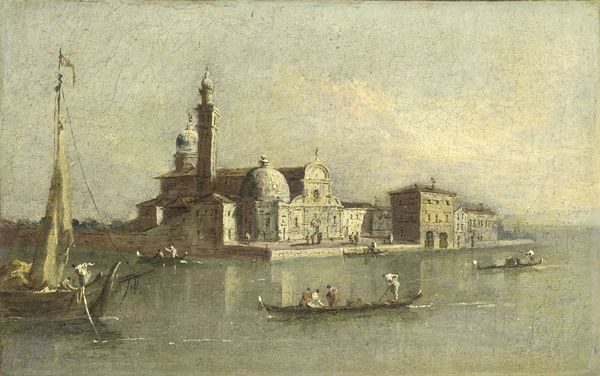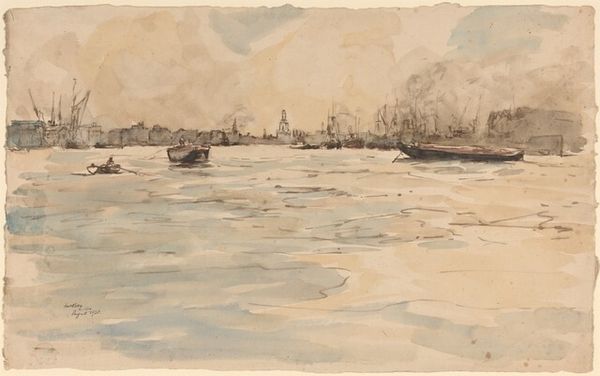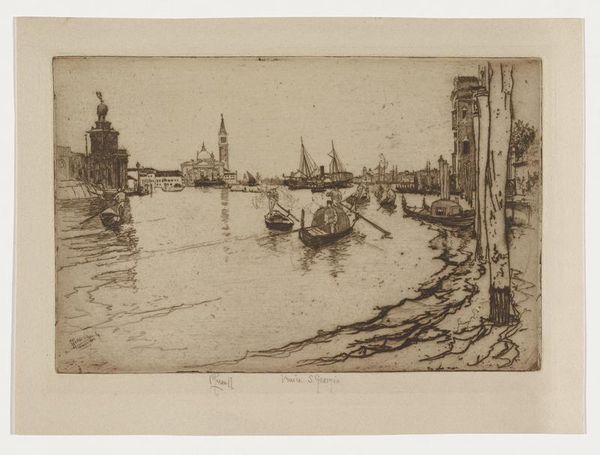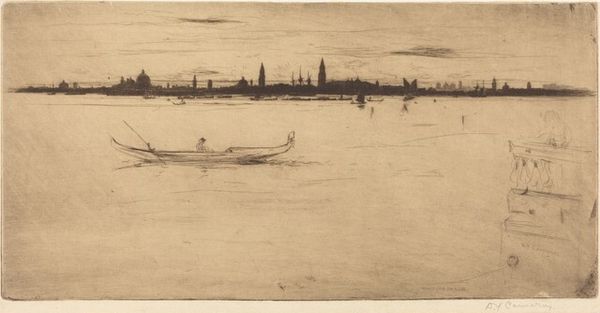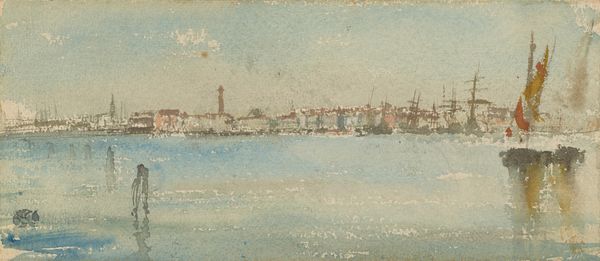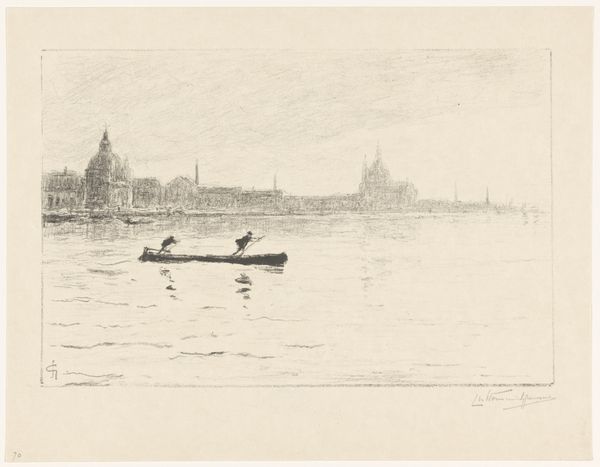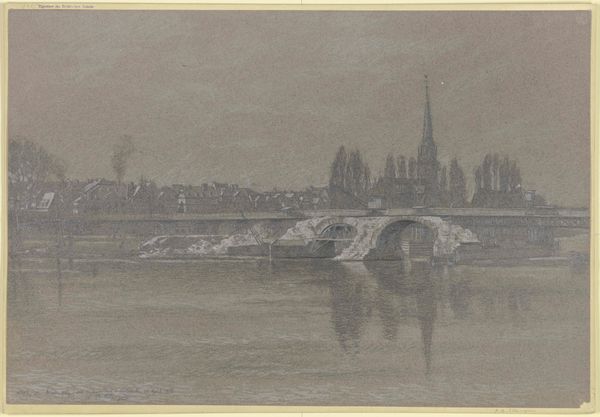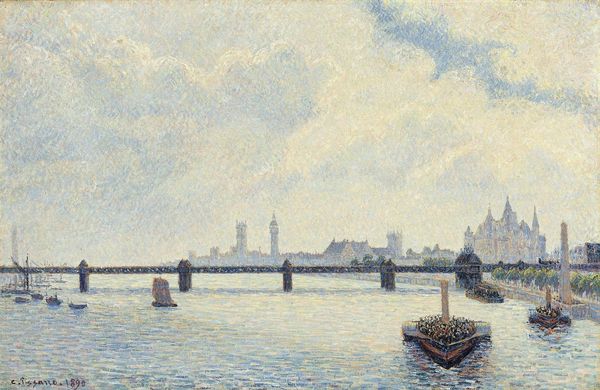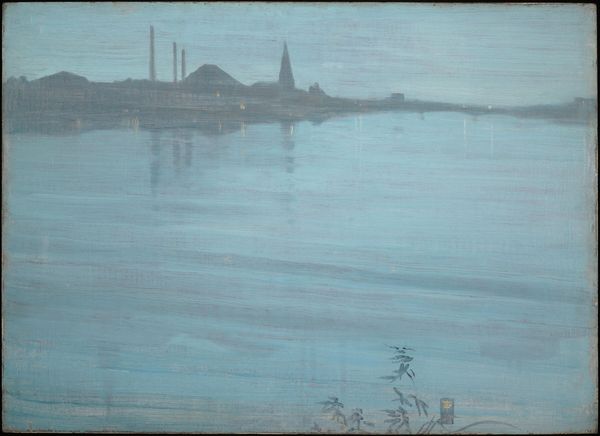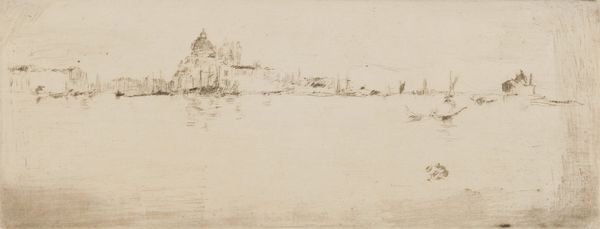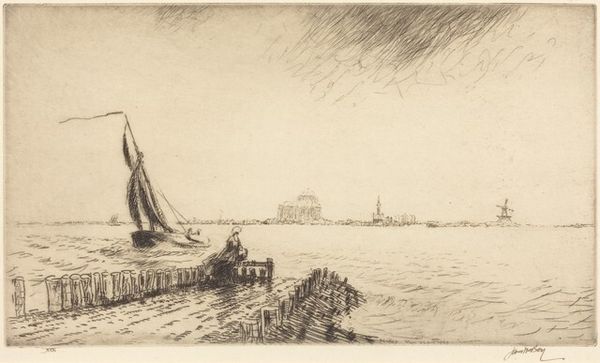
Copyright: Public Domain: Artvee
Curator: This is James Abbott McNeill Whistler's "The Church of San Giorgio Maggiore," a pastel created around 1880. Editor: Instantly, I get a feeling of calm melancholy. It's a symphony of muted tones – browns, blues, and a whisper of pink in the sky. It's dreamlike, as if Venice itself is fading into a memory. Curator: Whistler's Venetian pastels are fascinating because they move away from straightforward topographical depictions. Instead, they emphasize atmosphere and personal interpretation. Editor: I like that – it’s a real artist’s interpretation rather than a picture. And it almost doesn't matter what it is: I get the emotion even if I have no clue what’s represented. See how the church sort of rises out of the water, almost floating. There’s something inherently spiritual in how he portrays that. Curator: Indeed. The location, of course, holds significance. The church was established to venerate St. George, and its history, from Benedictine monastery to a military base under Napoleon, reflects broader power struggles. Whistler was also a shrewd careerist. The artist worked with the Fine Art Society, who introduced the artist’s Venetian scenes to wealthy industrialists from Northern England and Scotland. Editor: Funny how places change over time! So this very personal artwork was brought forth via political strife and industrial capitalism. And while that makes sense I suppose, there’s this beautiful distance he creates that allows the church to exist almost outside of Venice itself, if that makes sense. Like it's anywhere and nowhere at the same time. It’s quite timeless actually. Curator: Well, the commercial reception of the works made it a vital series in Whistler's career as a kind of exercise in brand building and income maintenance. It’s tempting to claim the work expresses something truly authentic outside those contexts, though the pastels and etchings themselves provided some breathing room for the artist. Editor: Interesting. So a calculated artistic vision and an ethereal escape all at once? Very Whistler, if you ask me. Anyway, it makes you want to grab a gondola and vanish into the mist, doesn’t it? Curator: A rather appropriate reaction, I would say, as this little work continues to conjure up big feelings about art, emotion, place, and history.
Comments
No comments
Be the first to comment and join the conversation on the ultimate creative platform.
